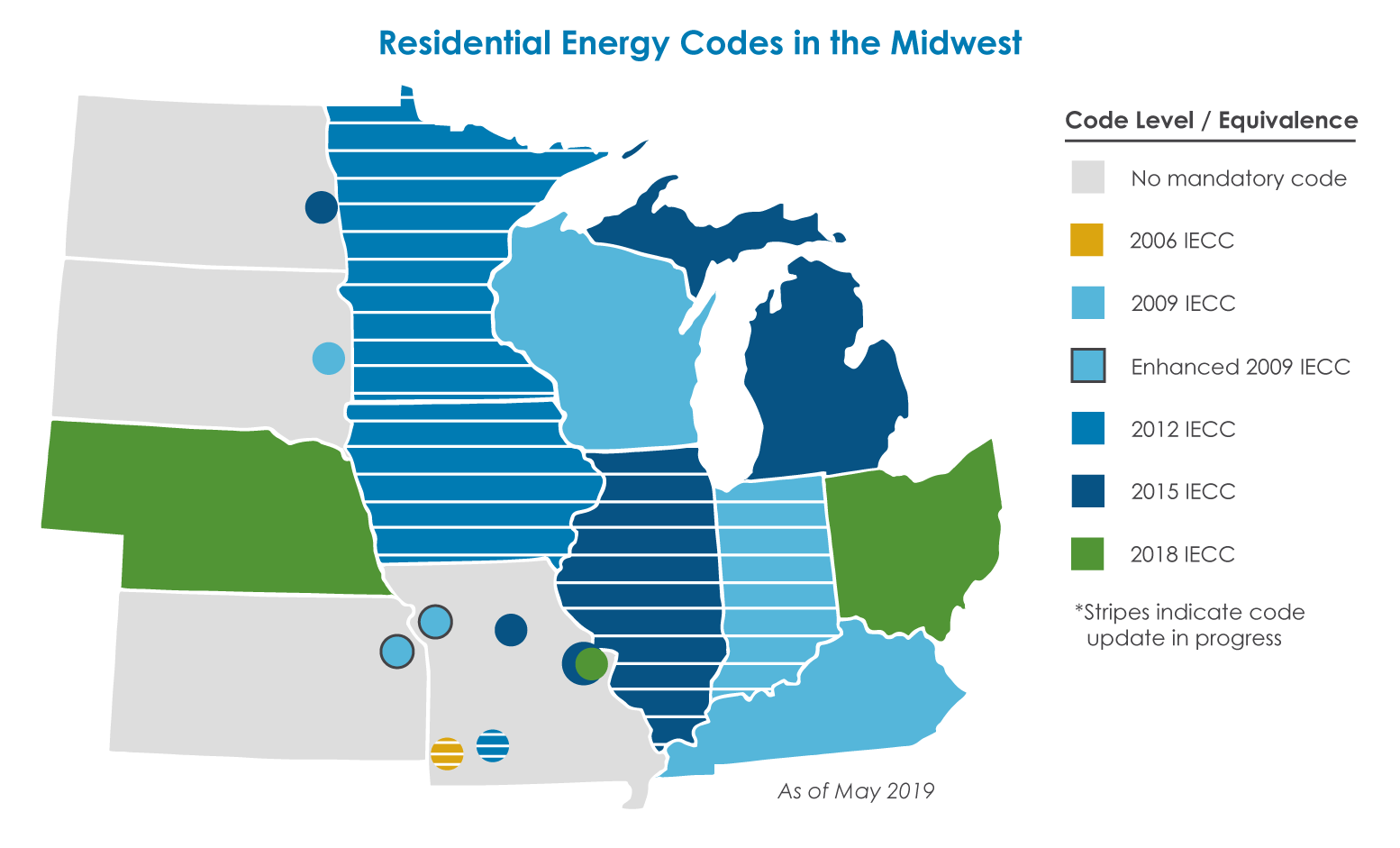
Nebraska’s buildings are about to get a lot more efficient. Seriously, a lot more efficient.
On Wednesday, May 8, Governor Ricketts signed LB405 into law. The bill, introduced by freshman Senator Megan Hunt, updates Nebraska’s statewide residential and commercial energy code to the 2018 International Energy Conservation Code (IECC) without amendments, making Nebraska the leader in efficient building codes in the Midwest, and neck-and-neck with national leaders like Massachusetts and California.


The Backstory
Nebraska had not updated their energy code since 2012, when the state adopted the 2009 IECC for all residential and commercial buildings. The other building codes have since been updated, but the energy code remained at 2009 levels.
Nebraska is the only state in the Midwest that updates its building codes through a legislative process as opposed to an administrative process. This means that for a code update to be considered, a senator must first introduce a bill. Nebraska’s legislature is unicameral, meaning there is only one chamber (and all legislators are senators). After they are introduced, bills are assigned to committee and progress through three rounds of debate – General File, Select File and Final Reading. That’s a lot of hurdles to clear, and the fact that LB405 was able to pass without weakening amendments is truly impressive.
Even though the state has made little progress on updating its energy code, other efforts have been made to improve the efficiency of buildings. The state recently completed a residential baseline study that assessed statewide compliance with energy code requirements in residential buildings. Additionally, Nebraska has an active Energy Code Compliance Collaborative (the oldest in the Midwest) that meets quarterly to discuss and address compliance challenges with the energy code. Facilitated by MEEA and the Nebraska Energy Office, the collaborative has historically not addressed adoption issues, instead focusing on stakeholder education (including senators), outreach, research and training coordination. To address this adoption opportunity, a group of collaborative participants formed an ad hoc group that played a big role in making this code adoption successful.
The Process
Senator Hunt introduced the code update bill (LB 405) on January 17, 2019 and the bill was referred to the Urban Affairs committee, where it was discussed at a hearing on February 12. While there was some opposition testimony at the hearing, there was an overwhelming amount of support spearheaded by a coalition of stakeholders-- builders, code officials, energy raters, the League of Nebraska Municipalities, the American Institute of Architects, ASHRAE, and others in the building industry testified about the many ways improved energy codes would benefit homeowners and residents in Nebraska. The bill was voted out of committee with 4 senators in support and 3 abstaining from the vote.
After moving out of committee, LB 405 was placed on General File for the first round of floor debate. The bill passed with a slim majority in the first round and a voice vote (simple majority) in Select File, with little opposition or discussion.
However, during Final Reading, there was a significant debate surrounding the bill, with a few senators voicing concerns about the code update, mainly characterizing it as unnecessary governmental regulation or expressing concern about potential increased costs (updating to the 2018 IECC is quite cost-effective, however).
Despite this opposition, a strong case was made for updating the decade-old code. LB 348 passed weeks earlier, which updated all other statewide codes to 2018 levels. Because building codes work together like an ecosystem, several senators emphasized the need for an energy code that was compatible with the other updated building codes. In addition to substantial stakeholder support at the hearing, there were also demonstrated cost savings (spelled out in detail below) from updating to the 2018 IECC.
Ultimately, the bill passed with a veto-proof majority on May 2. The bill was then sent to Governor Ricketts, where it was signed on May 8. The code goes into effect July 1, 2020.
How Will Nebraska Residents Benefit?
The unamended 2018 IECC will bring myriad benefits to Nebraskans, including significant energy and cost savings. By one estimate from Vandemusser Design LLC, a study commissioned by the Nebraska Energy Office, homeowners and occupants would use 15% less energy, saving nearly $200 on their energy bills annually. Those savings will continue over the lifetime of the home. Despite modest increases in construction costs, homeowners will see positive cash flow in less than a year according to a Nebraska specific DOE study. Expected energy savings for commercial buildings are even greater.
And, the benefits don’t stop there! Improvements to the building envelope and mandatory performance testing will result in improved air quality and healthier indoor environments for residents in the state. Studies have also found that better building codes improve building resilience – a particularly important benefit given the ongoing flooding in Nebraska.
Conclusion
Congratulations to Senator Hunt and the state of Nebraska for making such significant improvements to their energy code. MEEA is enthusiastic about the benefits the adoption of the 2018 IECC will bring for residents in the state. We look forward to continuing our work with Nebraska stakeholders to continue to improve building energy efficiency.